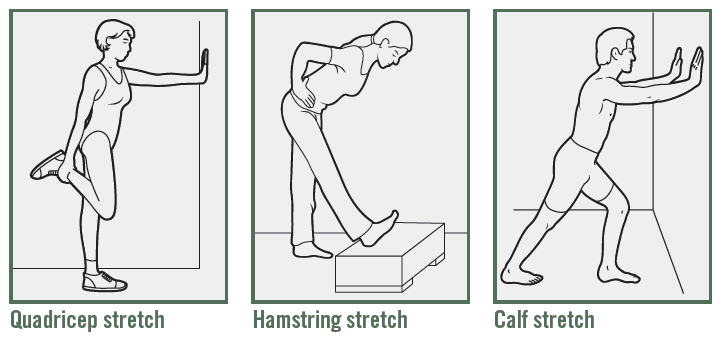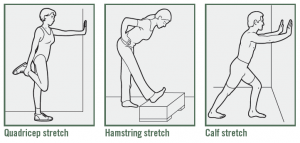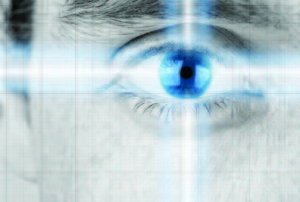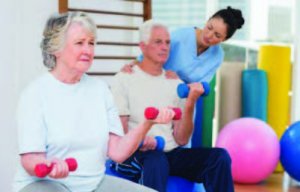by Ivan | Apr 2, 2019 | Healthy Aging, Patient News, Staying Active

Ramping Up your Sprint Fitness after a Long, Sedentary Winter
Whether you went into hibernation as the result of a record cold winter season, or took time off from your usual exercise routine because of a busy schedule or illness, spring is an ideal time to get back in action. When done with care, starting or rebooting your fitness regimen this spring will set you up for a vibrant, energetic summer. After being cleared for exercise by our office, consider these issues to ensure you’re not sidelined by injury, fatigue or boredom and get the most out of your spring fitness efforts
Aerobic or strengthening exercise?
Both. According to the 2018 Physical Activity Guidelines for Americans, any amount is helpful but the recommendations to help prevent chronic diseases is 150 minutes of moderate-intensity or 75 minutes of vigorous-intensity, aerobic activity is recommended each week, and muscle-strengthening activities (free weights or resistance bands) two or more days a week. It would be ideal for older adults to add balance training to the mix. If it’s challenging to find long periods of time to exercise, note that three 10-minute bouts or one 30-minute bout will deliver equal improvements in fitness.
Stretch before or after exercise?
Before, after or both can all work well, if done properly. Do not attempt long stretches beforehand when your muscles are cold and you’re likely to pull a tendon, cautions Christine Butz, Doctor of Physical Therapy at Athletico. Instead, take 10 minutes to pedal on a stationary bike, march in place or walk around. Post exercise is the time for long, 30-second stretches that help you slowly increase muscle length (see below for examples). Most importantly, don’t push through pain, says Butz. “If you experience sharp, persistent pain, or have difficulty moving through a full range of motion, stop and see a physician to determine if it’s a strain, tear or fracture.”

Steady state or interval training?
Once the bastion of elite athletes, interval training can be used at any level, according to Mayo Clinic. Simply alternate short bursts (approximately 30 seconds) of intense activity with longer intervals (three to four minutes) of less intense activity. For instance, if your exercise is walking, try incorporating a brief surge of jogging into your regular walks or alternate leisurely strolling with periods of brisker walking. As your cardiovascular fitness improves, you’ll be able to exercise longer or with more intensity during your spring fitness routine.
What are the best activities to try?
Tap into one of these fitness trends to reinvigorate your workouts:
- Starting with Jazzercise in the 1980s, and rising again in the 2000s with Zumba, both of which remain popular, numerous dance-centric classes are offered at health clubs and park districts – Broadway show routines, tap dancing, belly dancing, Irish dancing, square dancing, line dancing and ballet-inspired barre workouts. Interesting note: a number of studies are in progress exploring the possible benefits of dance in enhancing cognitive function and reducing stress.
- Indoor cycling classes such as SoulCycle, Flywheel and CYC provide a fast-paced, high-energy environment. If you prefer to stay outdoors, but feel a bit unsteady on a 10-speed racer, check out the proliferation of classic cruiser bikes featuring wide, comfortable seats and upright handlebars.
- Yoga and Pilates. Both are low-impact workouts that focus on using bodyweight resistance. Yoga builds strength, balance (ideal for preventing falls) and harmony in mind and body, with breathing exercises, meditation and postures (asana or poses) that stretch and flex various muscle groups. Pilates is excellent for improving core strength and recovering after injury.
- Water classes are another low-impact option to build core muscles and help improve flexibility, stability and balance. Choices include traditional aqua aerobics as well as aqua ballet, aqua yoga and aqua tai chi.
- Functional Training classes are designed to improve balance, coordination, agility, speed and strength, such as BOSU (both sides utilized) ball workouts.
The post Spring Fitness appeared first on Specialdocs Consultants.
by Specialdocs Consultants, LLC | Nov 20, 2017 | Healthy Aging, Patient News

As almost 10,000 Baby Boomers officially become senior citizens each day, the focus on preventing and treating age-related ailments becomes distinctly more urgent. HealthWise presents an ongoing look at research that provides valuable insights to help today’s seniors – and the generations set to follow – create a vibrant next chapter. We began with strategies to keep the aging brain healthy, and continue in this issue with a look at how your senses, specifically taste and smell, are affected by the aging process. Look for the latest on safeguarding your sight and sound in future editions.
A Taste of the Future
Savoring the sweetness of a rich chocolate, breathing in the scent of a fresh burger on the grill…taste and smell trigger the delights of eating by matching odorous molecules in the air with memories stored in your brain.
Taste buds have helped humans since the beginning of time identify foods as sweet, salty, sour, bitter or savory, and provide a warning not to ingest toxic substances. Forever intertwined with smell, food molecules travel through the rear of the nasal cavity to olfactory receptors in the roof of the nose – that is why if you hold your nose and put chocolate in your mouth, you will not taste the chocolate.
An effortless process for most, recognizing tastes and odors is actually cognitively demanding, and for older people, can be extremely challenging, as these capabilities greatly diminish as we age. Although new neurons continue to form in the olfactory region of the brain into adulthood, by age 50, the sense of smell starts to deteriorate rapidly as the number of sensor cells that detect aroma decrease…by age 80, smell detection is reduced by almost 50 percent. There is also a weakening of the nerves that carry the signals to the brain, and in the olfactory bulb, which processes them. In addition, the sense of smell may be diminished by reduced production of mucous, thinning of the nose lining and hormonal changes.
At the same time, the tongue’s taste buds are on the wane, dwindling from a high of 10,000 to just 5,000 in older adults. Dry mouth, caused by a reduced flow of saliva that is commonly seen in the elderly, or from medications such as antihistamines or antidepressants, also cause a loss of taste perception.
Why this matters: The ability to detect odors from spoiled foods, gas leaks and smoke is critical to safety. Taste issues means food becomes less appealing, and unhealthy amounts of sugar or salt may be added to food to make it more palatable, or less food is eaten, potentially leading to nutrition problems.
Preserve, protect and adapt
While there may not yet be a way to completely halt the decline, experts recommend a number of strategies to sharpen your senses of smell and taste and keep them working longer and better:*
Take brisk walks daily…exercise heightens the smell sense.
- Conduct your own sniff therapy by inhaling the scent of items such as peppermint and cinnamon first thing in the morning, sparking different receptors in the nose to work.
- Quit smoking…tobacco smoking impairs the ability to identify odors and diminishes the sense of taste.
- Reduce your risk of head injury by wearing protective helmets during sports and seat belts when riding in the car…trauma to the head can damage olfactory nerves.
- Treat nasal or sinus infections promptly, a primary cause of smell problems. The same advice holds for treating nasal polyps, small, non-cancerous growths in the nose or sinuses
that can block the ability of odors to reach olfactory sensory cells.
- Consider a change in medications that may be affecting your sense of smell, such as anti-allergy medicines.
- Choose foods that are naturally stronger flavored, such as mustard, pickles, radishes and peppers; add herbs and spices instead of salt. Use sun-dried tomatoes, vinegars, concentrate fruit sauces, extracts of almond, vanilla, citrus juice and peels to enhance tastes. Eat a variety of foods and textures, and change it up at every bite to keep your taste buds firing.
- Get an annual flu shot to help you avoid respiratory and ear infections that can interfere with taste.
- Practice good oral hygiene…take care of gum disease, inflammation or infections in the mouth, which can cause taste problems.
Finally, buy safety products, such as a gas detector that sounds an alarm you can hear.
The post Aging Well, Aging Healthy…a continuing series appeared first on Specialdocs Consultants.
by Specialdocs Consultants, LLC | Nov 20, 2017 | Healthy Aging, Patient News, Wellness

HealthWise presents an ongoing look at research that provides valuable insights to help today’s seniors – and the generations set to follow – create a vibrant next chapter. We have looked at strategies to keep the aging brain healthy and to protect the aging senses. In this issue, we get under your skin to learn how to keep it supple and resilient over the years. Wrinkles. Dry skin. Crow’s feet. Undereye circles. Sagging. Is there a way to stave off these very natural signs of aging? The answer is yes…and no. The thickening of the stratum corneum (the outer layer of the epidermis) which causes drier and flakier skin, is inevitable, as is the thinning of the dermis (underneath the epidermis), resulting in loss of elasticity. Genetics plays a pivotal role in determining when this starts to occur. However, there are a number of preventive steps you can take – some well-known and a few unexpected – which may help mature skin keep its youthful glow at 50, 60 and beyond.
Experts advise:
- Cut your sun exposure in half, at a minimum. UV exposure damages elastin and causes a loss of collagen, which results in sagging, fine lines and wrinkles. Think of sunscreen as the only truly magic elixir to improve skin appearance and health, and most importantly, prevent skin cancer…and choose one with SPF 30 or above and broad-spectrum UVA/UVB protection and use daily. In addition, wear a hat and UV-protective clothing outside, and try and avoid being in the sun when UV rays are strongest, between 11 am and 1 pm.
- Exercise. Another benefit to engaging in at least three hours of physical activity weekly is the positive impact on keeping skin younger, with the potential to reverse skin aging even for those
who start exercising late in life. New research showed that men and women over age 65 who exercised frequently had skin composition similar to 20 to 40-year-olds, with markedly thinner,
healthier stratum corneums and thicker dermis layers. Participants’ skin “looked like that of a much younger person, and all they had done differently was exercise.” Researchers surmised
that myokines, substances created by working muscles, may be responsible for the results, jump starting changes in cells far from the muscles themselves. They also noted that it was
unlikely that any pill or salve would replicate the skin benefits of a workout.
- Take short, lukewarm showers. Long, hot showers strip your skin of its natural oils.
- Protect in winter with a humidifier to add moisture to the home, and gloves to protect your hands from drying out.
- Focus on the right foods and beverages. Include omega-3 and omega-6 fatty acids in your diet, preferably from natural sources such as olive oil and fish, to help protect your skin’s
moisture barrier. Cut back on sugars which promote inflammation and can potentially damage normal production of dermal cells. Avoid high glycemic foods such as white bread and pretzels, which may also be responsible for prematurely aging skin. Drink plenty of water, but moderate alcohol intake – red wine can dilate blood vessels and contribute to rosacea, a skin irritation.
- Establish a smart night routine. Remove all makeup and wash your face before bed to eliminate the pollutants that break down your skin’s collagen all day. Then apply a retinoid followed
by a moisturizer.
- Get a good night’s sleep. During the deepest stage of sleep, your body releases growth hormones for cell repair, helping your skin rejuvenate on a daily basis.
- Minimize dark undereye circles with an extra nighttime pillow. As the delicate skin and muscle around the eyes weaken with time, the fat under the lower-lid skin can pool beneath your eye. Sleeping on two pillows can help prevent fluid accumulation.
If you want to explore other remedies, consider peels that exfoliate, and fractional resurfacing, a laser process that increases collagen production.
The post Aging Well, Aging Healthy…a continuing series appeared first on Specialdocs Consultants.
by Specialdocs Consultants, LLC | Nov 20, 2017 | Healthy Aging, Medical Conditions, Patient News

In the not so distant past, age-related macular degeneration (AMD), characterized by a loss of central vision, was deemed just another unfortunate consequence of growing older. The gradual breakdown of light-sensing retinal tissue that results in a blind spot directly ahead has caused each generation to struggle with driving a car, reading a printed page or recognizing a friend’s face. As the population ages, the sheer number of people affected grows rapidly. Another case of AMD is diagnosed every three minutes in the U.S. More than 2.1 million Americans with advanced AMD now will grow to 3.7 million by the year 2030, according to the National Eye Institute, who warns the condition will soon take on aspects of an epidemic. A surge of clinical trials and investigative research aims to prevent that from happening, with sights set firmly on restorative, curative solutions.
Scientists exploring the possible causes have made much progress isolating a group of genes that increases the likelihood of an individual developing AMD. Other studies point to inflammation as the trigger. The macula needs a constant, rich blood supply to work correctly, and any interference such as narrowing of the blood vessels, fatty plaque deposits, or a shortage of antioxidants, can cause the macula to malfunction and become diseased.
Treatments have likewise advanced. Last fall, a decades-old drug used to treat HIV/AIDS was reported in Science as unexpectedly exhibiting the capability to halt retinal degeneration. Nucleoside reverse transcriptase inhibitors, known as NRTIs, are already FDA-approved and can be rapidly and inexpensively translated into therapies for both dry and wet AMD (see sidebar), say the study’s authors. At the same time, a nanosecond laser treatment was successfully used to reduce drusen (small fatty deposits beneath the retina) and the thickening of Bruch’s membrane, both hallmark features of early AMD. Importantly, the structure of the retina remained intact, suggesting “this treatment has the potential to reduce AMD progression,” according to Medical News Today. Stem cell transplantation shows enormous promise, as reported in Lancet, with sight restored long-term to a group of patients with severe vision loss. Additionally, injectible drugs and pills that target inflammation associated with AMD are in nationwide trials.
Technological innovations to help AMD patients include the 2013 introduction of a miniature telescope implanted behind the iris to magnify images. Google is moving into the space with a patent for a contact lens containing a built-in camera that will enable audible warnings via a remote device, detect and describe faces, and act as a text reader.
Today’s AMD patients have no shortage of low-vison aids to help them adapt and live well. Google is developing a patent for a contact lens containing a built-in camera that will enable audible warnings via a remote device, detect and describe faces, and act as a text reader. Additional solutions range from ‘smart’ thermostats, watches and remote controls to talking devices.
Finally, understanding who is at risk for developing AMD can be key to prevention. These include: white, female, smoker, family member with AMD, high blood pressure, lighter eye color, obesity, and possibly, over-exposure to sunlight. To minimize risk, follow a healthy diet with plenty of leafy green vegetables and fish high in omega-3 fatty acids, exercise to keep weight and blood pressure under control, eliminate tobacco use, and wear sunglasses to protect from UV rays and high-energy visible (HEV) radiation.
When Dry Becomes Wet
Diagnosis of AMD is first confirmed with a visual acuity exam and testing with an Amsler grid. Those with AMD see the grid’s straight lines as wavy or blurred with dark areas at the center. Additional tests help determine the type of AMD — the dry form affects about 85 percent of AMD patients, and in about 10 to 15 percent of cases, progresses to wet. The difference is significant. The wet form usually leads to more serious vision loss, caused by new blood vessels that leak fluid and blood beneath the retina, resulting in permanent damage. While no treatment currently exists for dry AMD, in the last decade, a number of effective therapies have been implemented for wet AMD. These include monthly, intraocular injections (anti-VEGF) to inhibit a protein that stimulates formulation of new blood vessels, photodynamic or ‘cold’ laser treatment, thermal (heat) laser photocoagulation…and on the horizon are topical eyedrops that may someday replace injections. Nutritional supplements containing antioxidant vitamins, lutein and zeaxanthin are also effective in reducing the chances of dry AMD worsening to wet.
The post In Our Sights: Sharper Focus on Macular Degeneration Offers New Hope appeared first on Specialdocs Consultants.
by Specialdocs Consultants, LLC | Nov 20, 2017 | Healthy Aging, Patient News

While exercise has an undisputed key role in maintaining brain health throughout our lives, promising new research points to a number of other factors that can spell the difference between thriving or just surviving the senior years. We checked in with Eric Terman, MD, personal physician and Assistant Professor of Internal Medicine and Geriatrics at Northwestern University for an informed view of the latest thinking on this topic…important not just for current seniors, but also for aging Baby Boomers and for younger 40-somethings just beginning the “aging” process.
What are some of the key findings of current studies into how the mind ages?
Research shows that the brain continues to form new connections throughout life. This process, called adult neurogenesis, shows how plastic or structurally adaptable the brain is, even as we age. A combination of exercise, diet and stimulating environments can increase adult neurogenesis and improve cognitive functioning in young and old individuals. This has been documented in animals and we are seeing increasing evidence this occurs with humans too.
What role does exercise play?
We know exercise appears to increase the neurogenerative properties. While the cause is not clearly proven yet, there is little doubt that exercise benefits both body and mind in many ways. It is associated with reduced risk of dementia, and may actually be preventive. For these reasons, I almost always recommend a form of regular activity to my patients.
Do you advise your older patients to consider retirement for reduced stress, more time for leisure activities, etc?
It’s critical to stay engaged in something you care about, whether or not you’re earning a significant salary. The brain stays sharp if you continually grapple with problems, find solutions and achieve positive outcomes.
Wouldn’t lifelong learning classes and lectures fill that void?
Sometimes listening to a lecturer can be barely better than watching TV in terms of passive versus active involvement of your brain. Unless you’re reading textbooks and writing papers, you’re better off with the type of engagement you receive from working. It’s the same reason the benefits of brain training games are unclear – problem solving for real world issues results in better cognitive capacity.
Can you explain mindfulness-based interventions and how these work to reduce the severity or risk of diseases such as Parkinson’s and Alzheimer’s?
High levels of stress are associated with increased risk of these diseases, and with mild cognitive impairment. Mindfulness-based interventions such as meditation and yoga are non-invasive stress reducers, and proven effective complements to treatments for anxiety, hypertension, chronic pain and insomnia too. Preliminary research is also showing that mindfulness-based interventions reduce atrophy of the hippocampus (a critical site of episodic memory), increase gray matter and improve functional connectivity in the neural networks of the brain most affected by the disease process of Parkinson’s and Alzheimer’s.
What is the best way to get started with this kind of program?
There are formal meditation programs and yoga training activities, as well as some excellent apps that take you through the process, such as Headspace.
What advice would you give seniors looking for ways to keep their brain and spirit vigorous as they age?
Find something to pursue that keeps you actively engaged and that you love to do if you formally stop working. Definitely, keep moving – I have patients who have started exercise programs in their 70s and they see significant differences in the way they feel. Modify your sleep behaviors if needed to ensure a good refreshing sleep, every night. And while the effect of a strong social network may be somewhat of a chicken-egg conundrum, there is increasing evidence that social and mental stimulation strengthen connections between nerve cells in the brain.
Breakthrough research sheds new light on Alzheimer’s disease
Numerous studies of Alzheimer’s disease, the leading cause of dementia that gradually erodes a person’s memory, thinking and ability to perform everyday tasks, are beginning to provide answers as to causes and possible targets for treatment. For instance, the link with cardiovascular disease has become increasingly evident. Several conditions known to raise the risk of cardiovascular disease, including high blood pressure, diabetes and high cholesterol, also increase the risk of developing Alzheimer’s – as many as 80 percent of individuals with Alzheimer’s disease also have cardiovascular disease, according to the Alzheimer’s Association. Experts have noted that while some people develop brain plaques and tangles seen in the disease, they do not suffer from the symptoms of Alzheimer’s unless vascular disease is also present.
Other new research is focused on the blood-brain barrier (BBB), a protective filter of the brain that becomes more damaged in patients with Alzheimer’s disease. At University of Southern California, neuroscientist Berislav Zlokovic and team found that the BBB becomes leaky with age, starting in the hippocampus, an area that is affected before the symptoms of Alzheimer’s disease are seen. He noted that specialized brain scans might help doctors diagnose the condition earlier. “Dr. Zlokovic’s advances bring us that much closer to a cure,” reports the chairman of the Cure Alzheimer’s Fund.
The post The Healthy Aging Brain…a Continuing Series appeared first on Specialdocs Consultants.
by Specialdocs Consultants, LLC | Nov 20, 2017 | Healthy Aging, Patient News

We’ve all had the experience of frantically searching for car keys in the morning or walking purposefully into another room only to forget why we were going there, and as we age, it seems to occur with increasing frequency. Are these just signs of normal aging, or harbingers of a more serious condition? It’s a question more seniors and their families are asking, as awareness of progressive memory disorders such as Alzheimer’s disease grows.
The answers can be more reassuring than yo• may imagine. Many symptoms of memory loss are benign,or due to the aging process, and no further evaluation is needed (see the signs of normal aging, at right). Experts agree that most people who are aware of—and nervous about—their own declining memory, most likely do not have mild cognitive impairment or dementia.
However, it’s vital to know that if you do have symptoms of mild cognitive impairment (MCI), this may be due to underlying medical conditions that can be treated, such as thyroid dysfunction, vitamin deficiency, anxiety/depression, sleep disorders and uncontrolled chronic conditions such as diabetes.
You may want to consider seeking an evaluation if you experience increasing difficulty, compared to your past ability, over a range of everyday activities that include: remembering important details of things you’ve done in the past few weeks; completing complex tasks at work or home, such as keeping track of monthly bills; requiring personal assistance to remember family occasions or holidays; or having trouble finding your way around familiar environments.
Cognitive abilities are also affected by depression, so if you have experienced these feelings during the last month, further evaluation is recommended:
Felt that I cannot stop feeling “down” or “blue,” even with help from family or friends.
- Felt all pleasure and joy has gone from life.
- Felt hopeless about the future.
- Felt that everything was an effort.
- Felt low in energy or slowed down a lot.
- Did You Know?
150 minutes a week
Amount of exercise time needed to improve memory and reduce the risk of dementia. Source: Harvard Health
“Having memory loss does not necessarily mean yo• have Alzheimer’s disease (AD),” says neurologist William Rodman Shankle, MD, chair of California’s Memory and Cognitive Disorders Program at Hoag Neurosciences Institute. “In fact, there is a treatable cause in the majority of patients with cognitive impairment, provided it is detected early.”
Additionally, a rigorous combination of physical exercise, healthy diet, strict control of hypertension and diabetes, medication and ongoing social and intellectual stimulation, has proven highly effective in stopping or slowing down progression of all types of dementia, including Alzheimer’s.
Sources: Medical Care Corporation (www.mccare.com), Alz.org
Did You Know?
Learn, then sleep
While we sleep, memories are shifted to more permanent brain regions; studies have shown that sleeping shortly after learning new information can help retention in the long term. Source: The National Sleep Foundation
Signs of Normal Aging
- Forgetting the name of someone I know well, but remembering it later
- Forgetting what I was going to say in a conversation
- Forgetting what I was going to when going into another room
- Finding things I have recently put down
- Recalling a specific word I want
- Making occasional errors when balancing a checkbook
- Occasionally needing help to record a television show or adjust the microwave settings
- Getting confused about the day of the week but remembering it later
- Misplacing things from time to time, such as a pair of glasses
- Sometimes feeling weary of work, family and social obligations
- Becoming irritable when a routine is disrupted
Sources: mccare.com, Alz.org
Making Memories
- The creation of a memory begins with its perception, a quick sensation that is then stored in short-term memory, which lasts a few minutes to a few weeks before being erased. Strategies to enhance short term memory can be effective, such as dividing a 10-digit phone number into smaller chunks. Important information is gradually transferred from short-term into long-term memory.
- Working memory is the type most affected by normal aging. While a teenager will perform better on memory and word recall tests, a 70-year old can adapt by using associations to remember e.g. ‘Every Good Boy Does Fine’ for lines on a music staff.
- Long-term memory consists of procedural (knowing how to do things like ride a bike), semantic (knowledge of the world), and episodic (information about events you have personally experienced). Long-term memory decays very little over time, and can store a seemingly unlimited amount of information almost indefinitely.
The post Forget Me Not: Normal Aging, Mild Cognitive Impairment or Dementia? appeared first on Specialdocs Consultants.








Recent Comments